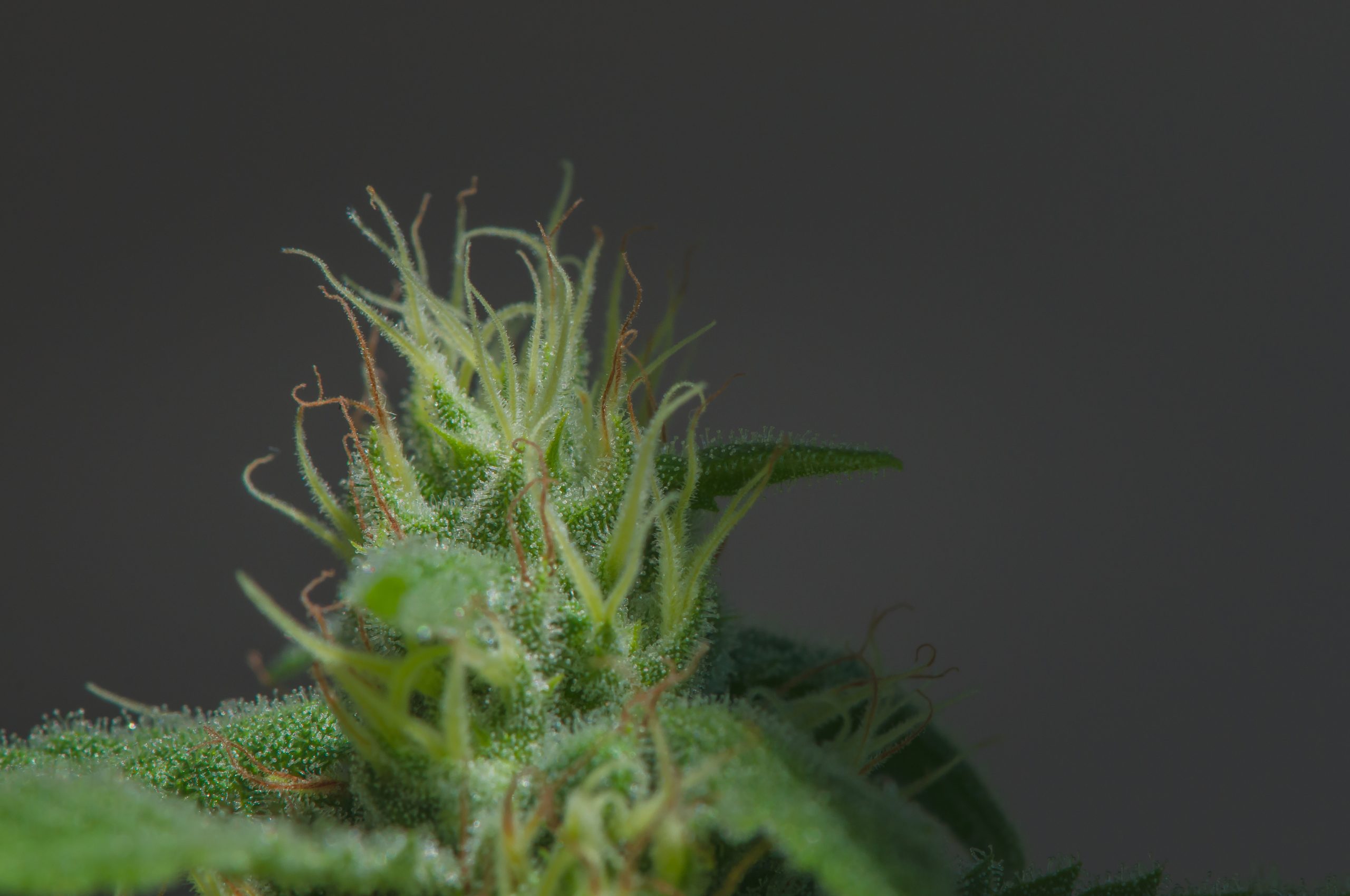
Of the many parts of the cannabis flower, the pistil is perhaps the most intriguing. A pistil contains the female reproductive organs of the flower. When the stigma of the pistil comes in contact with pollen from the male cannabis plant, it is considered pollinated and able to reproduce.
The pistil is centrally located with a swollen base, the flower’s ovary, which contains the potential seeds of the plant.
The tiny white hairs are a visible part of the pistil, called the stigma, and they have a sticky texture to catch the pollen from the male plant.
Let’s dive deeper into the botanical science of the cannabis plant.
The Cannabaceae Family
With Central Asian origins, cannabis is a member of the Cannabaceae family of flowering plants. Formerly placed in the Urticaceae family, recent DNA studies and gene sequencing determined a more definitive classification in the Cannabaceae family. Other plants in this family include Humulus (hops) and Celtis (hackberries). With over 170 species of plants grouped in 11 genera, the plants in this family can be trees, erect herbs, and twining herbs.
Cannabis, which encompasses both hemp and marijuana, is considered an erect herb. While not all plants have this distinction, members of the Cannabaceae family are usually dioecious, meaning they have distinct male and female parts.
In this family, the pistils have two carpels, or reproductive parts. The carpels appear similar to leaves and bear the ovules with the eggs inside.
The Cannabis Genus
First classified by Carl Linnaeus in 1753, the genus Cannabis was initially classified using the modern system of taxonomic nomenclature. This system is still used for naming species today and was created by Linnaeus himself. He determined there was only one genus of cannabis, and named it Cannabis sativa L. The L. stands for Linnaeus, the first person to name the species.
Cannabis indica Lam. was first named as a new species of cannabis in 1785 by evolutionary botanist Jean-Baptiste de Lamarck. He determined the second species from plant specimens that were collected in India. In 1924, Russian botanist D.E. Janischevisky named the third, controversial species, Cannabis ruderalis.
As we know, cannabis is a genus in the Cannabaceae family. What we don’t know for sure is if there are two or three species within the cannabis genus. The number of species is disputed amongst botanists. The two species that are definitive are Cannabis sativa (C. sativa) and Cannabis indica. The third species, Cannabis ruderalis, is disputed because it may be included with C. sativa. In fact, some argue that all three could be treated as subspecies of C. sativa, or that C. sativa could be considered a single, undivided species.
[ Read More: How To Decarboxylate Weed – Cannabis Decarboxylation Guide ]
Cannabis Reproduction
Reproduction in the cannabis genus occurs via wind pollination. While a cannabis plant is typically male or female, various monoecious types have also been discovered. Monoecious means a single plant that bears both male and female flowers. Sometimes incorrectly termed “hermaphrodites,’” monoecious plants bear the male and female flowers separately in different locations on the plant. Hermaphrodites do occur in cannabis plants; however, these flowers bear the staminate (male) and pistillate (female) parts together on the same flower.
Depending on the use of the plant, certain cannabis types may be preferred over others. Dioecious varieties are desired for drug production because of the female flower–produced fruits. Monoecious types are sought out for paper and pulp manufacturing.
Dioecious plants are preferred in medicine because the female cannabis plant that contains the pistil possesses the trichomes, which are glandular structures that secrete the cannabinoids, terpenes, and other compounds of medicinal value.
The Importance of the Pistil
The pistil can give a grower important information about the cannabis plant, including the age, sex, and appropriate time to harvest.
The mere presence of pistils will indicate that the plant is female, or at least a hermaphrodite or monoecious plant.
The color of the pistils is also very telling. They will be white for the majority of her flowering cycle. As she nears the end of her cycle, the pistils will turn red or brown. When the pistils are around 60-70% red or brown, the THC level is at its peak in most strains. This is a critical observation for cannabis farmers to determine when they should harvest their crops. Once the pistils are 70-90% red or brown, the plant is overly ripe and may begin to lose potency.
Viewing the trichomes under a handheld microscope can also help farmers determine the readiness of a cannabis crop for harvest. Once the pistils are 60-70% red or brown, the trichomes should begin to be observed. The trichome head begins to fill with a clear liquid.
As the plant matures, the liquid turns milky white and then a deep amber. It is time to harvest when the majority of the trichomes are milky white with only a few having transitioned to amber. If the trichomes are mostly amber, then the plant is overripe, and the THC and other phytochemicals can begin to degrade.
Auto-flowering vs. Photoperiod Pistils
With auto-flowering cannabis strains, you can see white pistils growing from the flowers within 15-35 days after germination. In a matter of days, the pistils will begin to change from white to red or brown as opposed to waiting weeks for the transition.
Photoperiod cannabis plants will begin with white pistils at the onset of the 12/12 light cycle. Halfway through flowering, around weeks 4-6, you will begin to see the first signs of maturing red or brown pistils. After a flush with pure water or administering a flushing solution during weeks 7-10, the majority of pistils will turn red or brown and are now ready for harvest.
Pistil, The Reproductive Harvest Marker
The pistil has a fundamental role in cannabis plant reproduction and ripeness indication.
Housing the female reproductive organs, the pistil is integral in the life cycle of the plant. When pollinated by the male staminate, the pistil can reproduce.
As the immature pistil turns from white to red or brown, she is telling the farmer when she’s ready to be harvested, at peak potency.
Knowing what a pistil is and its importance to cannabis farming is essential knowledge for anyone in the cannabis science or farming industries. It’s also just cool information to know about our favorite plant species, no matter what industry you serve.
[ Read More: How Many Ounces Are There in a Pound of Weed ]







[…] Pistil color: When 60-70% of the pistils (hair-like structures on the buds) have darkened and curled, it’s usually time to harvest. […]
Great insights on the pistil and its importance in cannabis cultivation! I never realized how much it impacts flavor and potency. Excited to learn more about the secrets behind those beautiful buds! Thanks for sharing!
This post really opened my eyes to the importance of the pistil in cannabis plants! I had no idea it played such a crucial role in flavor and potency. The insights you provided are incredibly helpful for both new and experienced growers. Can’t wait to try out some of these tips!